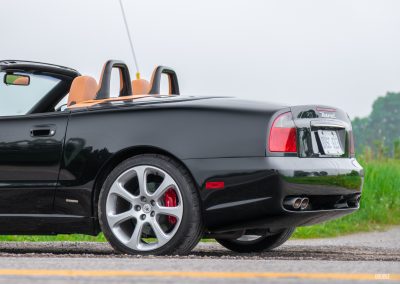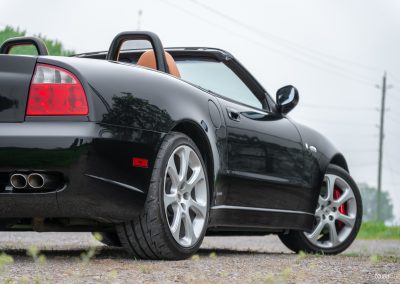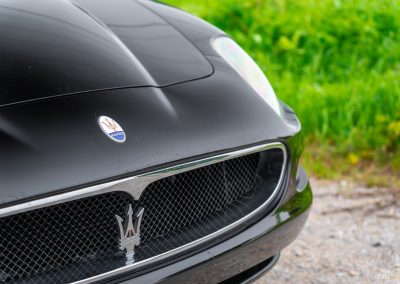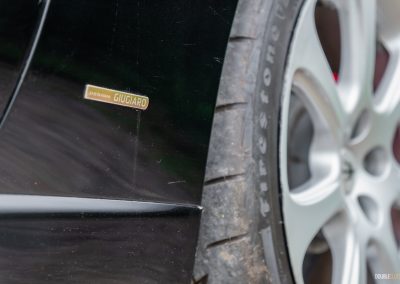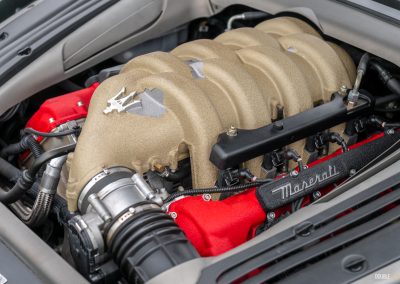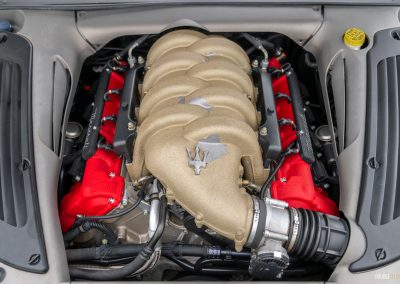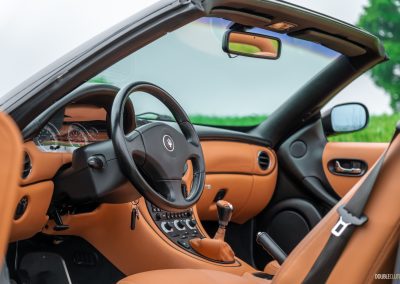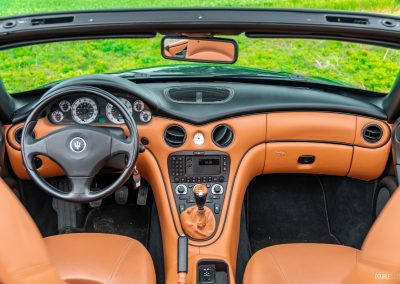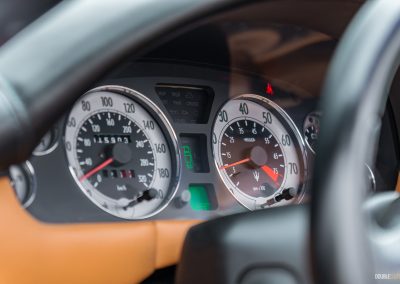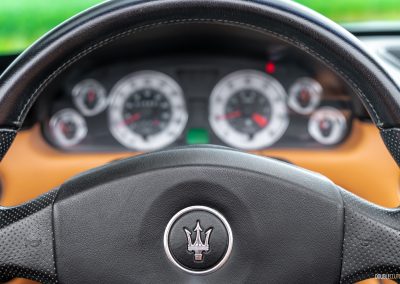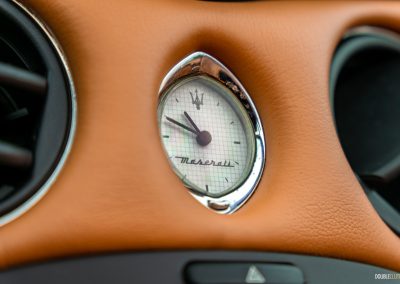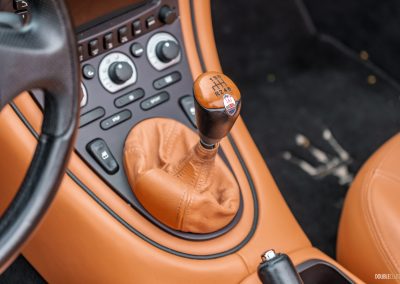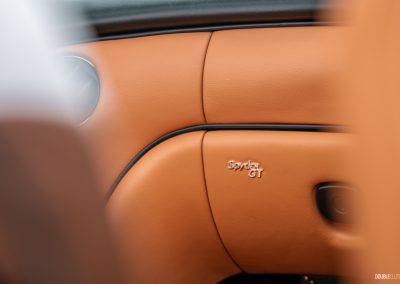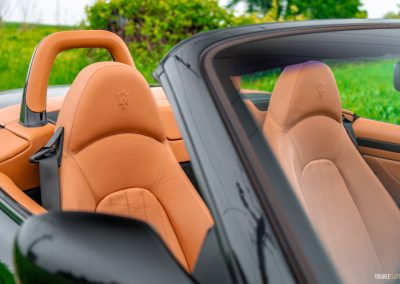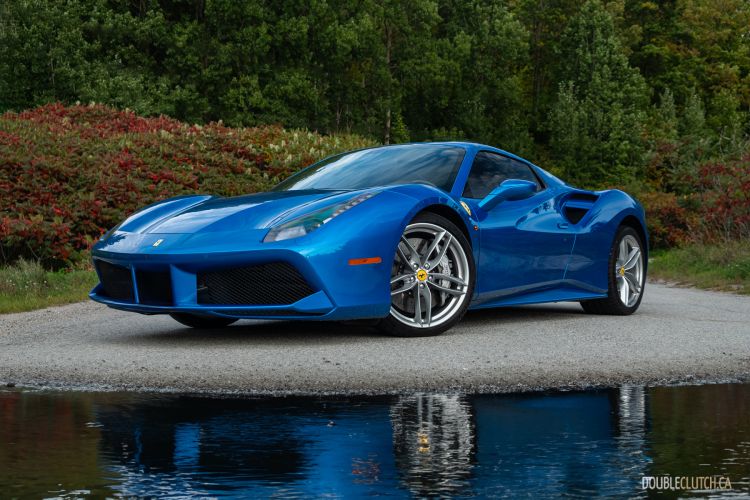I will openly admit to being very surprised with this 2003 Maserati Spyder GT. To be quite frank, at best, Maserati has a spotty history with their cars, and I was expecting to be let down.
I was not.
Ferrari and Maserati tend to exist in the same breath, inexorably linked, opposite sides of the same coin, both benefiting from each other’s brand cachet. Whereas Ferrari has always enjoyed success, Maserati has been bought out and saved from liquidation multiple times. Their cars weren’t even sold on our side of the pond throughout most of the 1990s, while their ancient arch rivals at Ferrari were enjoying a bit of a renaissance, courtesy of then-new chairman Luca de Montezemolo’s influence.
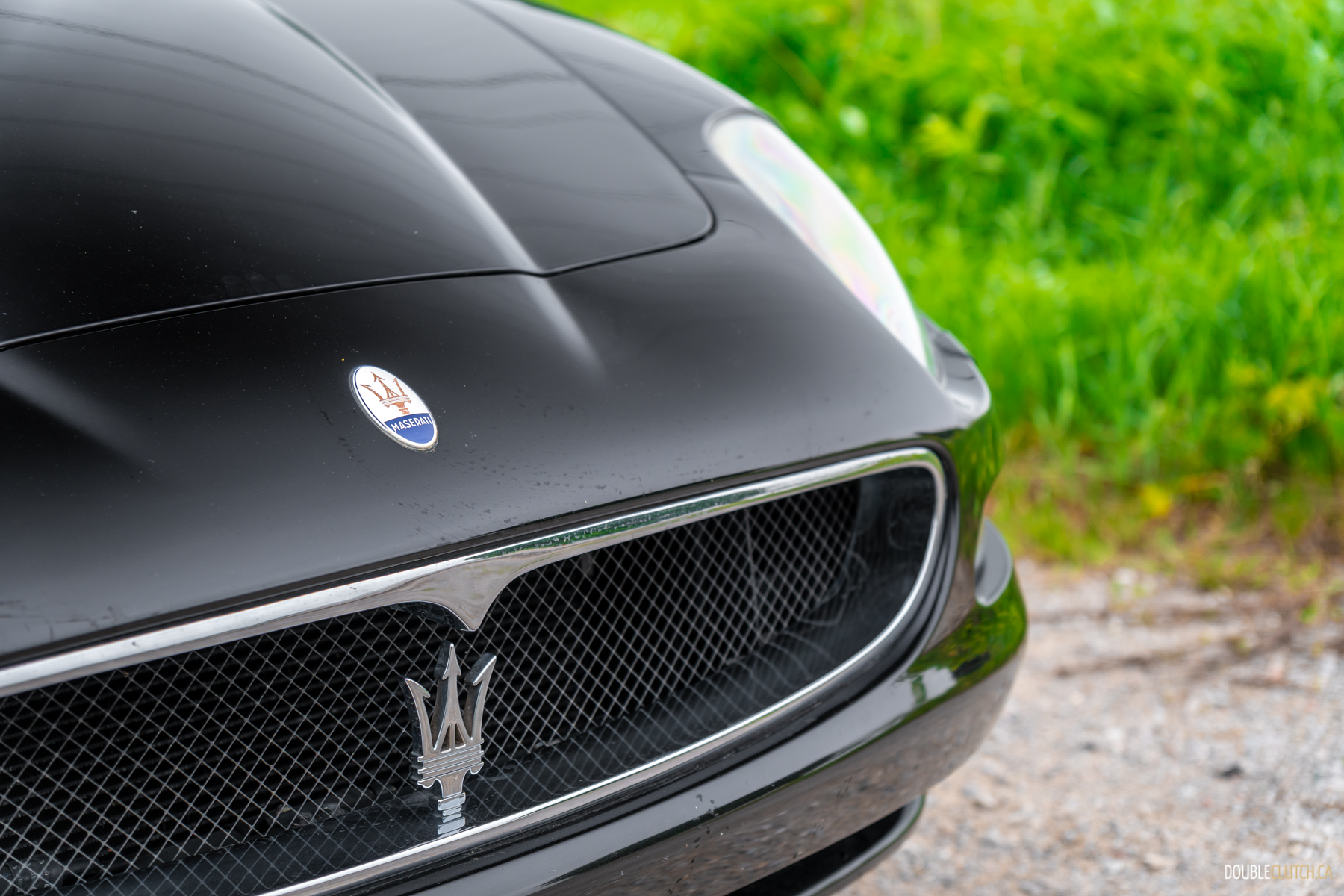
Part of his influence was to buy a controlling stake in the stagnated Maserati brand, use the enormous power of the Ferrari name to breathe new life into their old foes, lean into Maserati’s history of making superb gran-tourers, and ultimately become a luxury brand for Ferrari. Montezemolo himself presented the Maserati 3200 GT, the first car to be born from this union. He was flanked by Giorgetto Giugiaro, its designer, and Sir Stirling Moss, who raced Maserati cars with great success in a bygone era. The 3200 GT was fairly well received but sold in relatively small numbers, and almost entirely within Europe; a promising but modest start.
The car I’m looking at is the second phase of Maserati’s revival, which took the same pretty body and terrific chassis, and imbued it with literal Ferrari power — a modified version of the F136 V8 engine found in F430 — finally retiring the old BiTurbo engine concept from when DeTomaso owned the company. Renamed to just Spyder GT and Coupe GT, this car was meant to be sold worldwide and put Maserati back on the map. It was the tip of a trident, followed in short order by the Quattroporte sedan and MC12 supercar, a three-pronged attack to spear the Maserati name into hearts and minds the world over.
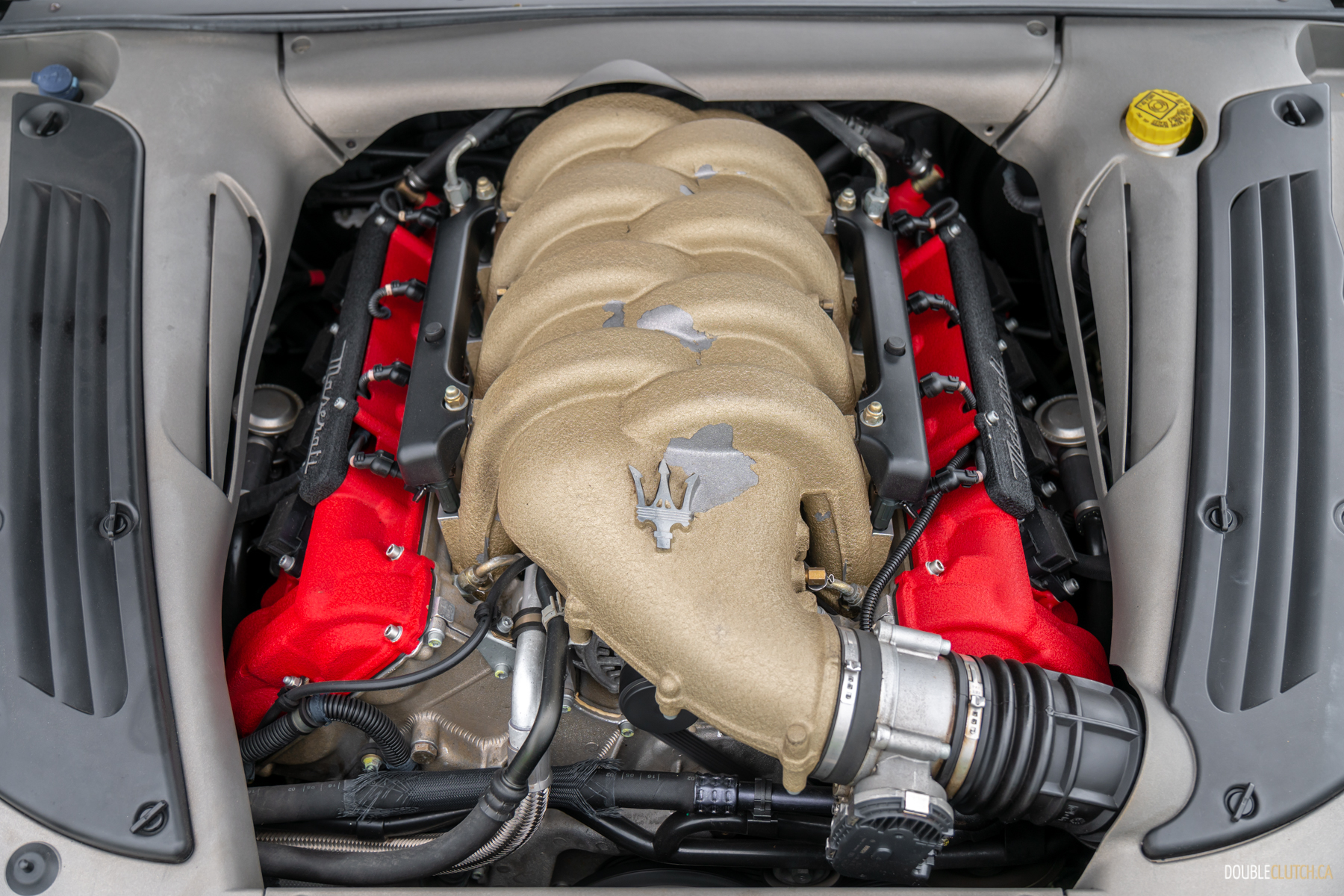
Prior to this, the only Ferrari-powered Maserati I had driven was a Quattroporte. It was a fantastic chassis with a brilliant engine held back by a loathsome semi-automatic transmission, forced upon it by Ferrari. I don’t care what anybody says: early single-clutch automated manuals, a la Ferrari’s “F1” gearbox, are atrocious in anything but, well, an F1 car. This isn’t a knock against Ferrari specifically; Aston Martin’s SportShift was terrible, BMW’s SMG was terrible, Lamborghini’s E-Gear was terrible. It’s a garbage technology that should have never seen the light of day, and I’ll die on that hill.
This Spyder GT caught my attention because it’s much smaller, which helps, a convertible, which I love, and conducted by a traditional six-speed manual transmission. I was trepidatious towards the GT and ready to be let down; this car wasn’t really loved by the American motoring press that influenced my developing brain, and hasn’t caught on in the used market or in the internet headspace as a whole. I now have no idea why. The Spyder GT is oh-my-God terrific. Y’all are sleeping on this.

Let me start by tempering expectations: it’s still a Maserati, it’s still weird, and it’s not, umm, an objectively excellent sports car like a Corvette or a 911. It’s more along the lines of something like a Jaguar XK or an Aston Martin Vantage, meant more to be a stylish and charismatic grand-tourer. I think the Spyder GT does that wonderfully, in its own distinctly Italian way.
First, being one of Giugiaro’s designs, the Spyder GT is a bit of a curious shape. It’s small and curvaceous with very classic proportions, tapering inwards towards its bottom like something from the 1960s. It doesn’t have the same immediate wow factor like Ian Callum’s Jaguar XK, but it’s a complex shape with subtle details whose beauty reveals itself to you slowly. It encourages you to let it breathe and slowly drink it in, savouring its complex flavors, like an after-dinner Amaro liqueur.
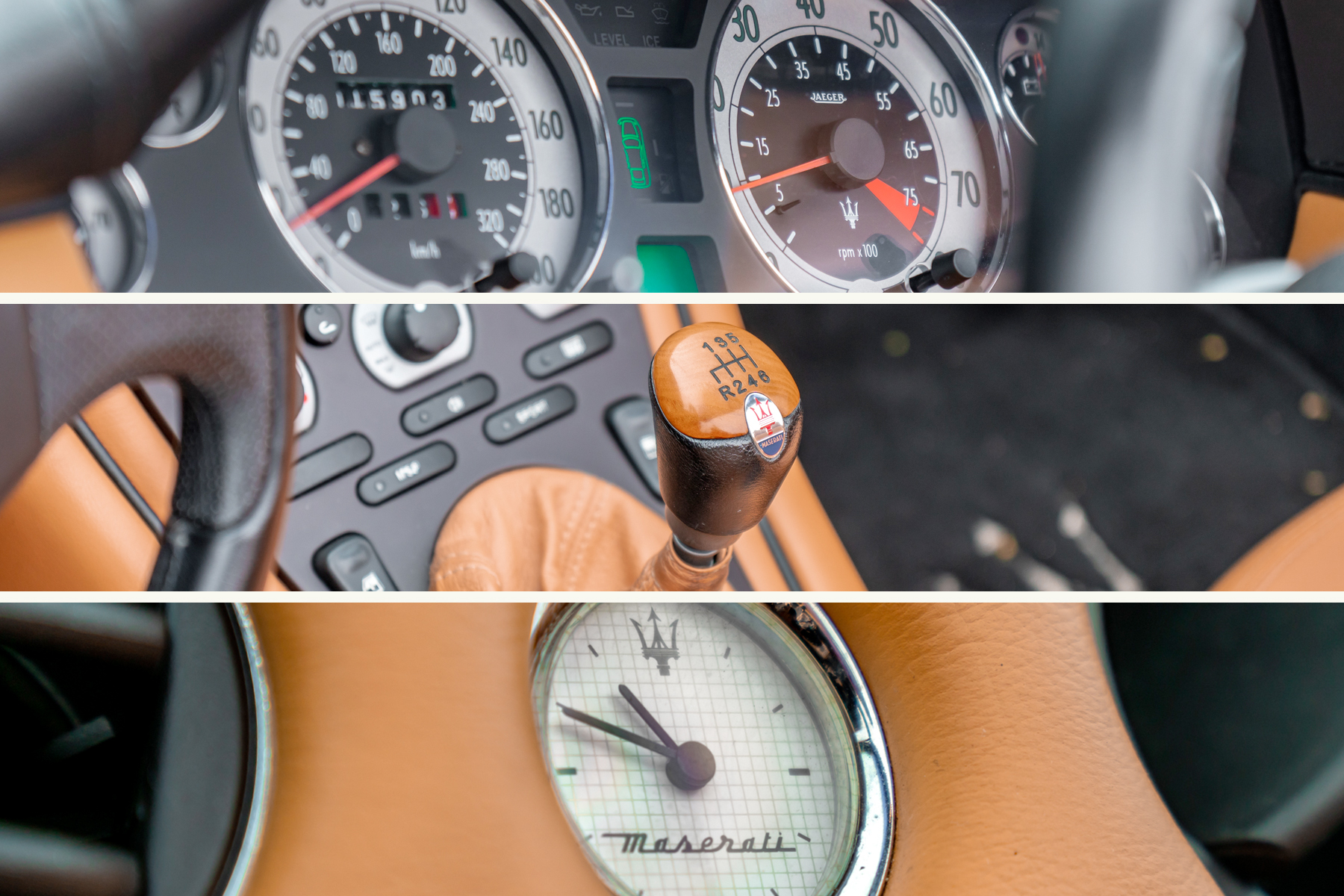
Like the Spyder GT’s body, the interior is a beautifully crafted treat. Your eyes first land on the intricate Jaeger gauge cluster, before working your way across the sweeping leather-lined dashboard framed with contrasting piping, capped with a Maserati clock. At the bottom of this Italian hide waterfall is a leather-and-wood shifter, proudly garnished with the Maserati badge. The seats are soft, supportive, and well-suited to the fast cruising this car was built for.
It cruises fast very well, but it goes about it very differently than something like say, a Porsche. Its first impression is remarkably slick; the engine fires quietly and settles into a soft idle. The clutch take-up is relatively light and easy to modulate. Its rigid torque-tube driveline is free of shudders and vibrations. Its modified Ferrari engine uses a cross-plane crankshaft and milder cam profiles for smoother operation and more low end torque; take-off is buttery smooth, immediately. No awkwardness here; it feels right, right away. The shifter is a bit of a reach from the driver and has long throws, but it feels deliberate and intimate. The Spyder GT doesn’t mind being hustled but it doesn’t like being hounded, rewarding some mechanical sympathy. It’s fitting; ham-fisted buffoonery doesn’t suit the car at all.

On approach to a corner, the chassis reveals itself as also demanding some finesse, as the short wheelbase and uncharacteristically quick steering rack means it feels super agile, hiding its nearly 3,800-pound heft quite well. Beyond the freakishly fast steering, the chassis is … strange, at first. It moves around a lot, rolling quite a bit through corners and exhibiting an almost comical amount of dive and squat. We tend to associate this characteristic as being sloppy, but the Spyder GT is the furthest thing from it. It’s just set up in a very classic way, letting the body shift its weight, taking a set into corners, feeling all the more dramatic as the nose rises and falls during upshifts on hard acceleration.
Hard-charging is sweet in this car. The marriage of a traditional, cross-plane crank that creates the signature V8 rumble with a high-strung Ferrari engine makes for a sound like few other cars on Earth. This is one of the best sounding engines ever built; a deep baritone morphs into a shrieking tenor as the revs climb up to its 7,500 rpm redline, producing 390 horsepower along the way. It’s quick, but not so fast that it feels wasted on the street. The short gearing makes you a key piece of the action, shifting often to keep that delicious V8 in the upper reaches of its vocal range.
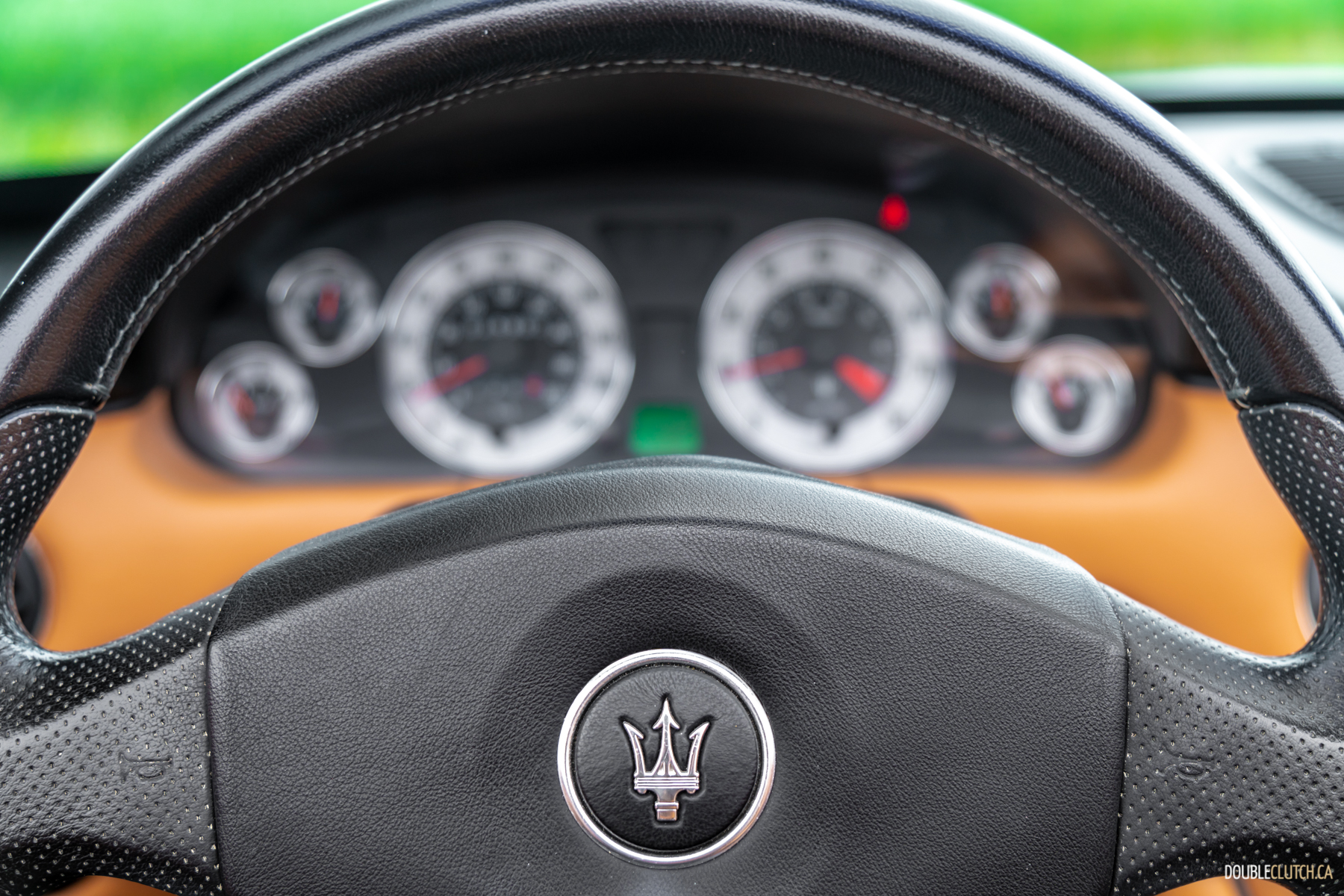
While you might be inclined to write off the chassis as being roly-poly because it moves and allows weight transfer in a way we’ve all been taught is a no-no, it’s actually quite a gem. It turns in enthusiastically, telegraphing what the front end feels through the leather-wrapped Momo steering wheel. The chassis shifts over, takes a set, and pulls through. It shows very neutral balance, tweaked very slightly towards understeer to offset its slight rearward weight bias. On corner exit, you can finely dial in as much oversteer as you’d like using the opera pedal, with a mechanical limited-slip differential managing affairs at the back, all being relayed to your seat through a talkative chassis.
The Spyder GT is comfortably one of the most surprising cars I’ve ever driven, coming out of left field and defying old, lukewarm impressions. It’s fantastic and goes about its business in a charming, unconventional way that ends up being exactly what I’d expect of a car proudly wearing Neptune’s trident on its nose. All in one breath, the Spyder GT manages to be a terrific boulevard cruiser and a joyous driver’s car, all wrapped in a subtle and elegant package. It’s not as fast as a Corvette, not as well sorted as a Porsche, not as comfortable as a Jaguar, but this 2003 Maserati Spyder GT so much more interesting than all of them, both at rest and in motion. It’s the one I’d have.










